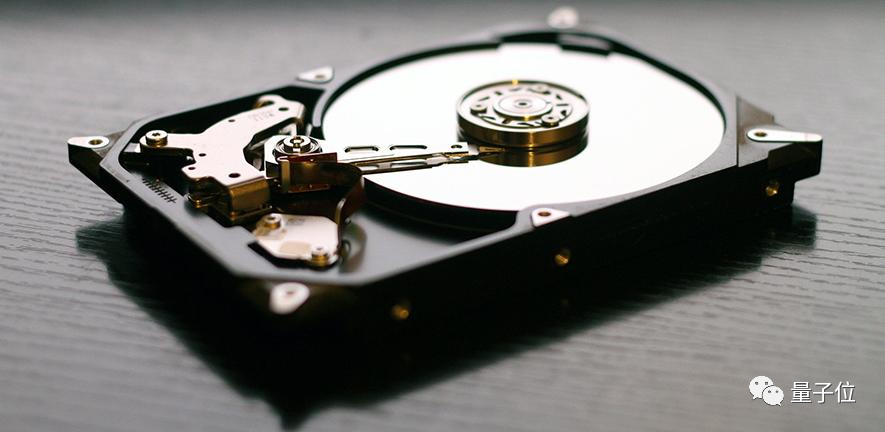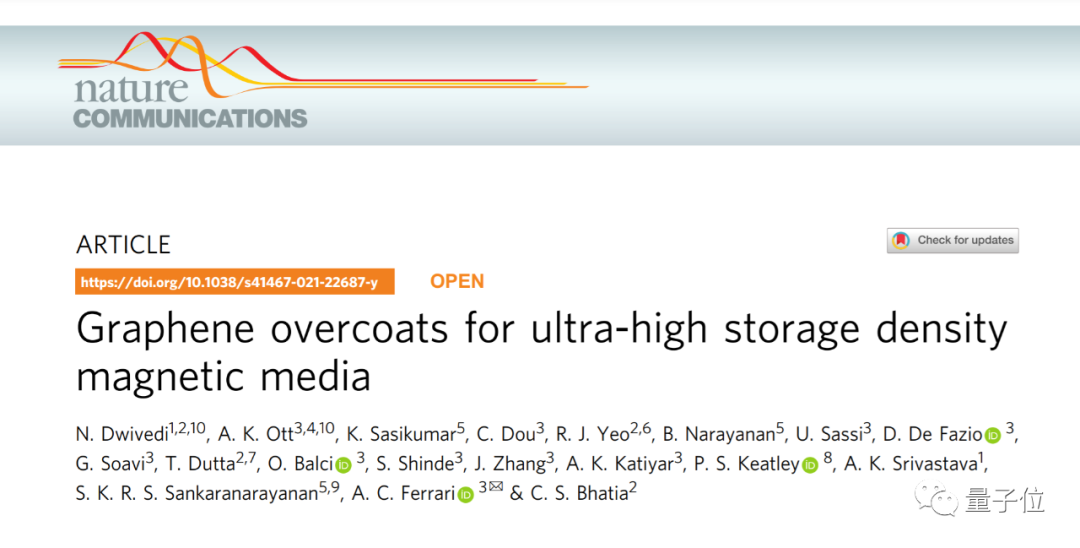Source: qubit
Shuimufan Originated from Aofei Temple
Quantum bit report | Official account QbitAI
Has your hard drive gone up again?
Over the years, the development of the mechanical hard disk industry has been stagnant, but the price remains high.
Although SSDs are widely used nowadays, mechanical hard disks still have a place in the computing field.
Of course, the storage capacity of hard disks is increasing, but with the growing demand for media, we need hard disks that can store more data.
So can we improve the storage capacity of the hard disk?
lately, Graphene Center of Cambridge University Researchers found that:
Graphene can be used for ultra-high density hard disk drives. Compared with the current technology, the data storage capacity per square inch can be increased from the current 1Tb to 10Tb.
This means ten times more capacity!
The study has been published in Nature Communications It was carried out by the team of Cambridge University, Exeter University, India CSIR Advanced Materials and Technology Research Institute, EPFL, National University of Singapore and Argonne National Laboratory.
Now, let's take a look at how graphene is used for mechanical hard disks?
How graphene is used for HDD
HDD first appeared In the 1950s, however, their use as storage devices in personal computers did not rise until the mid-1980s.
The hard disk contains two main parts: the disc and the head.
The data is written on the disc by the head. When the disc rotates, the head will move quickly thousands of revolutions per minute above the disc. The head can be positioned at the designated position of the disc to read and write data.
Therefore, the space between the head and the disk determines the storage density of the hard disk.
What is the space in the middle?
The middle layer is called Carbon based coating (COC) , which is a carbon based material and can be used to protect discs from mechanical damage and corrosion.
Since 1990, the data density of HDDs has quadrupled, reaching 1TB per square inch, and the corresponding thickness of carbon based coatings has been reduced from 12.5nm to about 3nm.
What if you want to further improve the data density? We have to consider what materials can be thinner.
To say thin, graphene is incomparably thin.
In addition, graphene has all the desirable properties of anti-corrosion, low friction, wear resistance, strong hardness, lubricant compatibility and surface smoothness.
Therefore, the Cambridge researchers replaced the traditional commercial carbon based coating with one to four layers of graphene.
How effective
It's no use talking more. How about the actual effect?
The researchers transferred graphene to a hard disk made of iron and platinum as a magnetic recording layer, and tested Thermal assisted magnetic recording (HAMR) 。
HAMR can heat the recording layer to a higher temperature to increase the storage density, making the data bits smaller and more closely arranged, while maintaining stability.
In February 2020, Showa Electric (SDK) announced the next generation of new magnetic films, which are made of iron platinum (Fe Pt) alloys. Combined with HAMR technology, they can increase the data density to 6TB per square inch.
Look, this is the power of combining HAMR technology.
In addition, the current carbon based coatings cannot work at these high temperatures, but graphene can.
Researchers say that a single graphene layer can reduce corrosion 2.5 times.
Therefore, the combination of COC based on four layers of graphene with other innovative technologies, such as HAMR and Bitmapped Magnetic Recording (BPM), can far outperform current HDDs.
The final data density also really broke the record, with the data density per square inch exceeding 10 TB.
Netizen: waiting for graphene to become mainstream
Why did graphene get the news again?
Some netizens commented:
Because it's graphene! The elusive element in the electronic industry, the solution to all problems.
Well, this explanation is really simple and rude.
Another netizen said: Wait for graphene to become the mainstream of the storage industry.
The author of the study, from the Graphene Center in Cambridge Dr. AnnaOtt Said:
It is very important to prove that graphene can be used as a protective coating for traditional hard disk drives and can withstand HAMR conditions, which will further promote the development of new high-density hard disk drives.
Director of Graphene Center, Cambridge Professor Andrea C. Ferrari It also added that:
This work shows that graphene can be used for ultra-high storage density magnetic media with excellent mechanical, corrosion and wear resistance.
In 2020, HDD storage capacity will be about 1 billion TB If graphene can be replaced with graphene, there is infinite potential.
This time in the field of data storage, graphene, the "king of new materials", has once again proved its magic.
Although many graphene products have been speculating about concepts before, we hope this time is not just a concept. Let's expect graphene storage to enter our lives!
After all, who doesn't want their hard disk capacity to be 10 times larger?
Link:
[1] https://www.cam.ac.uk/research/news/ultra-high-density-hard-drives-made-with-graphene-store-ten-times-more-data
[2] https://techenclave.com/threads/graphene-overcoats-for-ultra-high-storage-density-magnetic-media.198770/
[3] https://www.reddit.com/r/technology/comments/nutbnx/ultrahighdensity_hard_drives_made_with_graphene/
[4] https://www.ubergizmo.com/2021/06/hard-drives-made-with-graphene-10x-storage/
(Statement: This article only represents the author's view, not Sina.com's position.)















